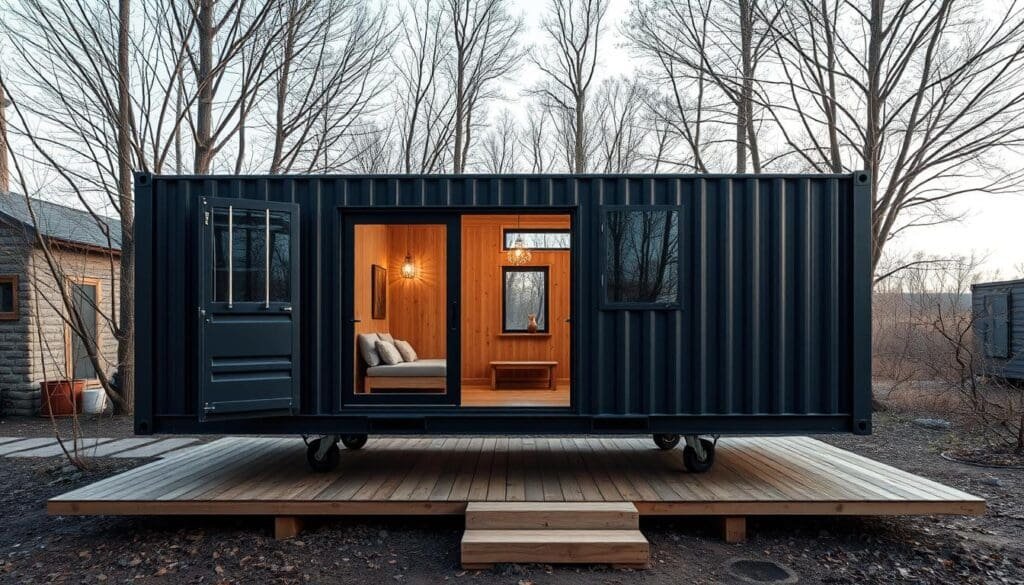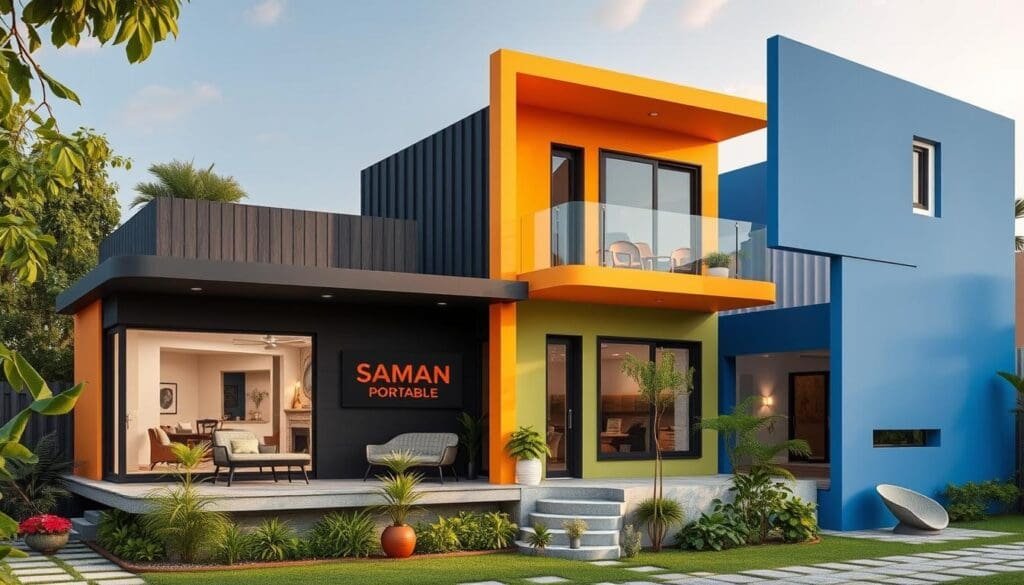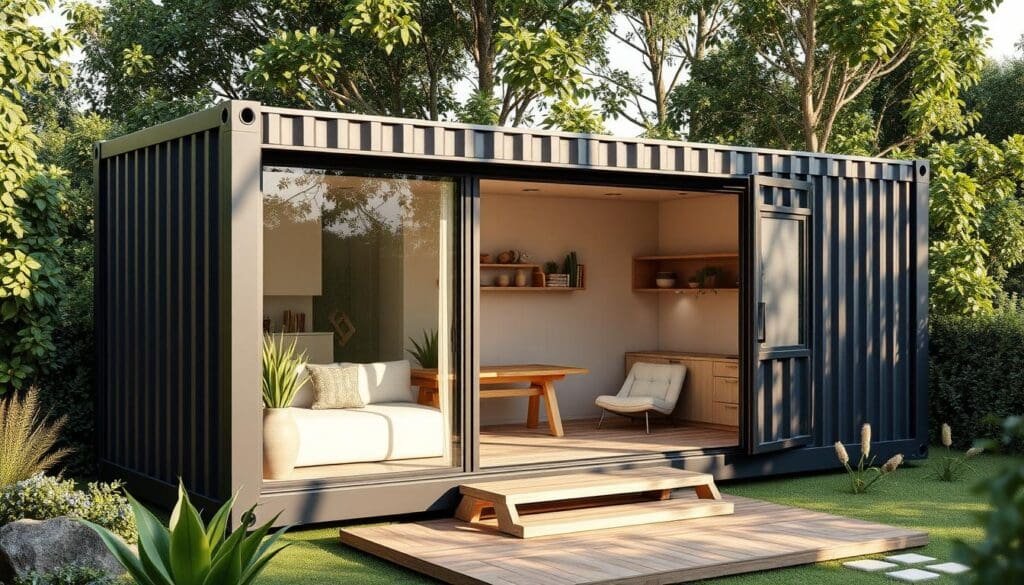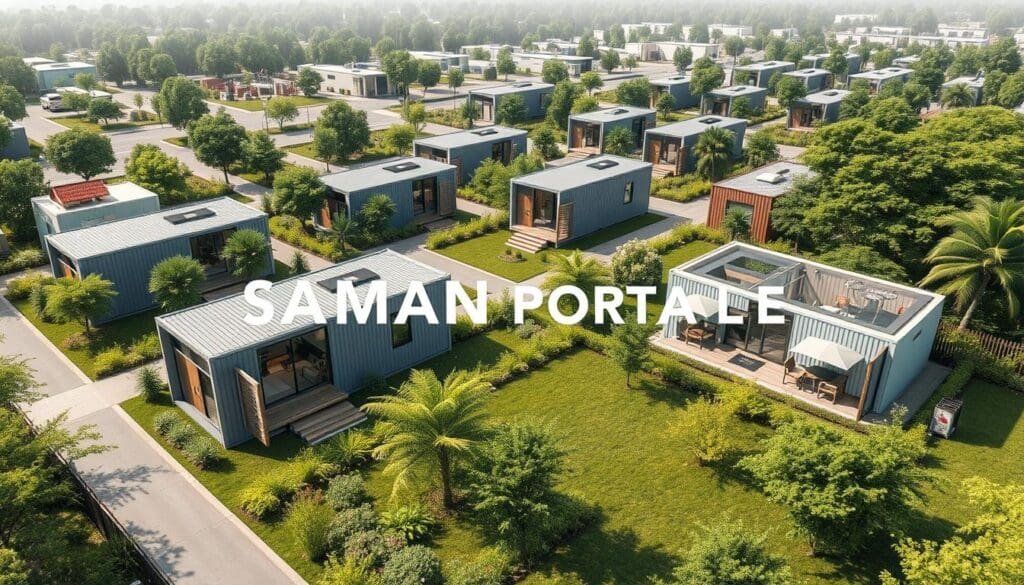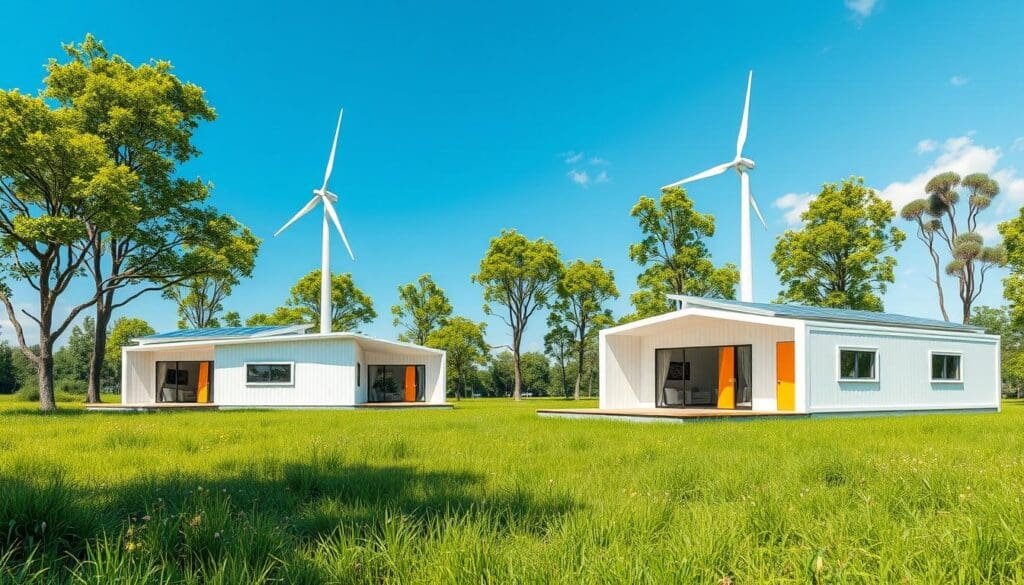Revolutionizing Construction: The Rise of Shipping Container Architecture
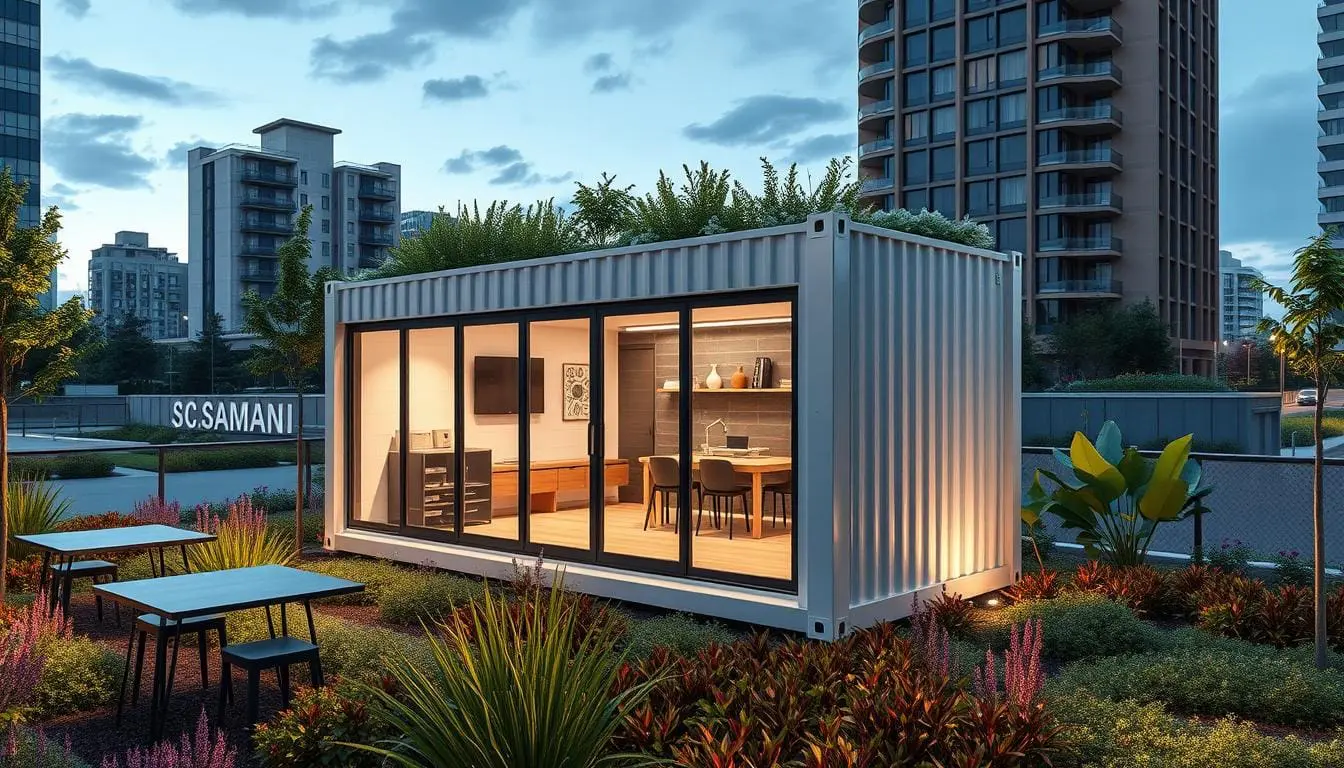
Introduction to Shipping Container Architecture
Shipping container architecture has emerged as a groundbreaking concept in the construction industry over the past decade. This innovative approach involves repurposing empty shipping containers into functional structures, offering a sustainable alternative to traditional building materials. As architects and developers worldwide recognize the potential of these durable steel boxes, shipping container architecture has gained popularity for its versatility and low cost. The ability to create unique designs and structures using modified shipping containers has captivated the imagination of the architectural community, paving the way for a new era of eco-friendly construction.
The beauty of shipping container architecture is that it’s a cost effective and sustainable solution to modern building problems. With millions of cargo containers around the world, architects can upcycle them into container homes, offices and even student housing projects. The modularity of shipping containers allows for fast assembly and flexibility in design, making them suitable for many applications. As the world is looking for innovative and green building methods, shipping container architecture is leading the way, a glimpse into the future of green building. check out portable cabins by Saman Portable.
History and Evolution
The history of shipping container architecture dates back to the mid-20th century when the first cargo containers were introduced for efficient transportation of goods. Over time, the idea of repurposing these containers for construction began to take shape, leading to the development of container architecture as we know it today. Initially, shipping containers were used for temporary structures and emergency shelters, but as their potential was realized, they evolved into more permanent and sophisticated buildings. The transition from simple cargo containers to modular architectural elements has been a significant milestone in the evolution of container architecture.
In the last decade, shipping container architecture has experienced a surge in popularity as architects explore new ways to utilize these durable steel boxes. The concept of transforming shipping containers into homes, offices, and commercial spaces has gained traction worldwide, with notable projects in cities like Los Angeles, London, and Amsterdam. As the movement continues to grow, shipping container architecture has become synonymous with innovation and sustainability, offering a viable solution to the challenges of modern construction. The evolution of this architectural style reflects a broader trend towards eco-friendly and cost-effective building practices, making it an important area of focus for the future of construction.
Abundance of Shipping Containers
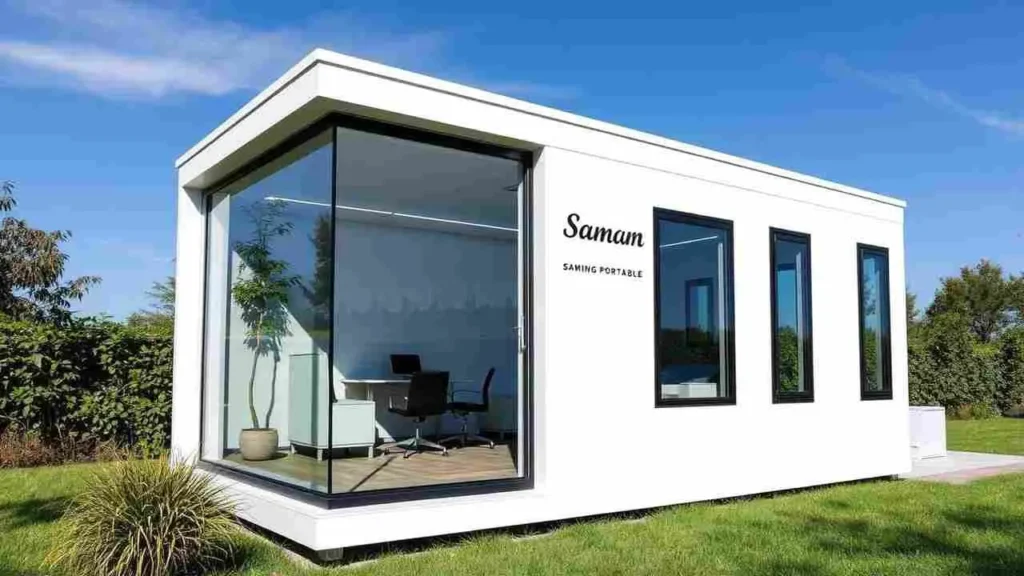
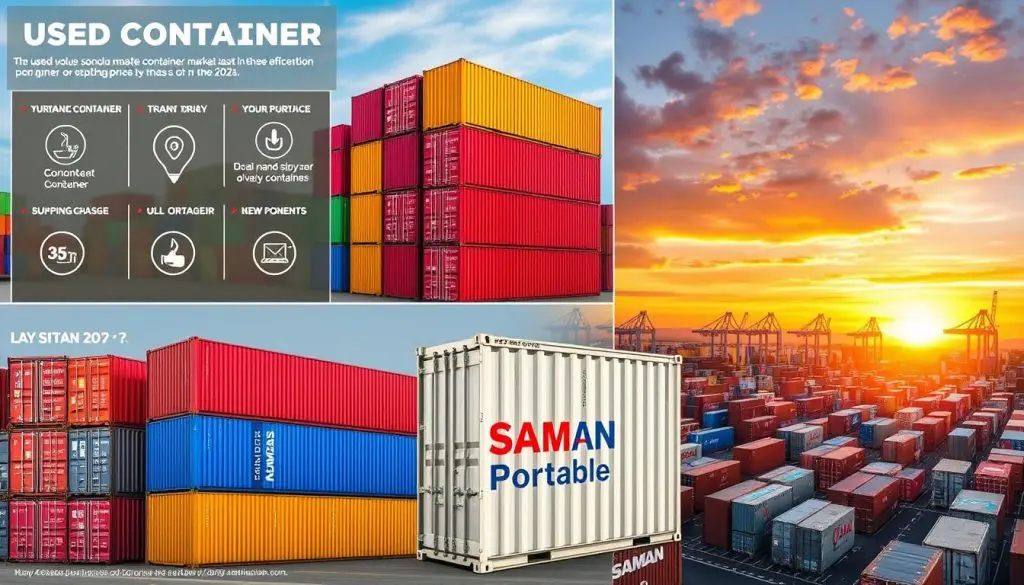
The global surplus of empty shipping containers presents a unique opportunity for sustainable construction. With millions of containers lying unused in docks and storage yards, repurposing them for building projects can significantly reduce waste and promote eco-friendliness. This abundance of shipping containers has fueled the rise of container architecture, as architects and developers seek to upcycle these steel units into functional structures. By transforming empty shipping containers into homes, offices, and other buildings, the construction industry can minimize its environmental impact while creating cost-effective and innovative solutions.
Repurposing shipping containers for architecture not only addresses the issue of waste but also offers numerous benefits in terms of cost and sustainability. The use of shipping containers as building blocks reduces the reliance on traditional building materials, which can be expensive and environmentally taxing. Additionally, the modular design of shipping containers allows for quick and efficient construction, making them an attractive option for projects with tight timelines and budgets. As the world continues to grapple with environmental challenges, the abundance of shipping containers offers a promising solution for sustainable architecture, paving the way for a more eco-friendly future.
Advantages of Shipping Container Architecture Overview
Shipping container architecture offers a multitude of benefits that make it an appealing choice for architects and developers. Here are six key advantages:
- Cost-Effectiveness: Shipping containers are cheaper than traditional building materials like wood and bricks. Their widespread availability reduces overall construction costs, making them a budget-friendly option for various projects.
- Durability: Constructed from robust steel, shipping containers are designed to withstand heavy loads and harsh weather conditions. This durability ensures the longevity of structures made from these materials, providing a reliable building solution.
- Eco-Friendliness: By repurposing empty shipping containers, architects significantly reduce construction waste, promoting sustainability. This approach aligns with the growing demand for eco-friendly building practices.
- Modular and Fast Construction: The modular nature of shipping containers allows for quick assembly. They can be easily stacked and configured to create diverse structures, speeding up the construction process and offering flexibility in design.
- Innovative Design Potential: Shipping container architecture offers unique design possibilities, such as rooftop terraces and central courtyards. These features enhance the aesthetic appeal and functionality of container buildings.
- Versatility: Shipping containers can be adapted for various uses, from homes and offices to student housing and commercial spaces. Their adaptability makes them suitable for a wide range of applications, meeting diverse architectural needs.
These advantages highlight why shipping container architecture continues to gain traction as a sustainable and cost-effective alternative to traditional building practices.
Challenges and Disadvantages
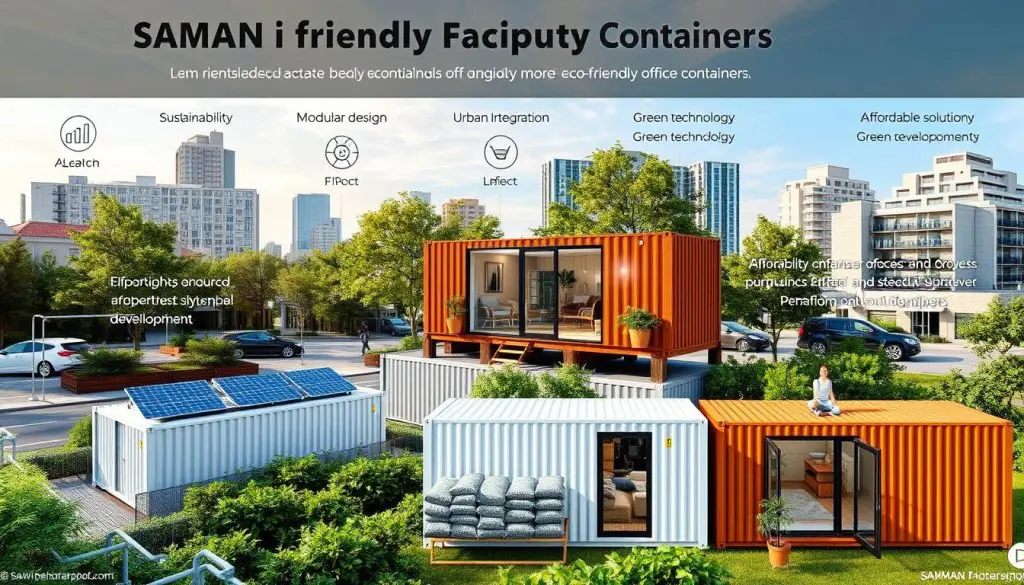
Despite its many advantages, shipping container architecture also presents several challenges and disadvantages that must be addressed. One of the primary concerns is insulation and ventilation, as shipping containers are not naturally equipped to maintain comfortable indoor temperatures. Retrofitting containers to include proper insulation and ventilation systems can be costly and technically complex, adding to the overall expense of construction. Additionally, the dimensions of shipping containers can limit design possibilities, as they are typically narrow and may require creative solutions to maximize space.
Another challenge associated with shipping container architecture is the potential for rust and corrosion, particularly in regions with high humidity or saltwater exposure. Ensuring the longevity of container structures requires regular maintenance and the use of protective coatings, which can increase costs and complicate construction timelines. Furthermore, the process of cutting and reinforcing steel walls to accommodate windows, doors, and other structural elements can be labor-intensive and require specialized skills. While shipping container architecture offers numerous benefits, these challenges highlight the importance of careful planning and execution to ensure the success and sustainability of container-based projects.
6. Applications of Shipping Container Architecture Overview
Shipping container architecture has found diverse applications across various sectors, showcasing its versatility and adaptability. Here are five top applications:
- Residential Housing: Container homes have become increasingly popular as affordable and eco-friendly housing solutions. These homes can be customized to include modern amenities such as kitchens, bathrooms, and living spaces, offering a comfortable and sustainable alternative to traditional housing. The modular design allows for quick assembly and flexibility, making them an ideal choice for urban and rural settings alike.
- Student Housing: Shipping containers have been effectively used in student housing projects, providing cost-effective and efficient accommodations for students in urban areas. The adaptability of containers allows for the creation of compact living spaces equipped with necessary facilities, addressing the growing demand for student housing in crowded cities.
- Commercial Spaces: In the commercial sector, shipping container architecture has been utilized for a wide range of purposes, from offices and retail spaces to cafes and pop-up stores. The modular design of containers allows for quick setup and relocation, making them ideal for businesses looking for flexible and temporary solutions.
- Emergency Shelters: Due to their durability and quick assembly, shipping containers are often used for emergency shelters and disaster relief housing. Their robust structure provides safe and secure living spaces in times of crisis, and their ease of transport makes them suitable for deployment in remote or affected areas.
- Industrial and Site Offices: Shipping containers serve as practical solutions for industrial and construction site offices. Their sturdy construction can withstand harsh environmental conditions, and their modular nature allows for easy expansion and customization to meet the needs of various projects.
These applications demonstrate the versatility and practicality of shipping container architecture, making it a popular choice for innovative and sustainable construction solutions.
Innovative Design Features
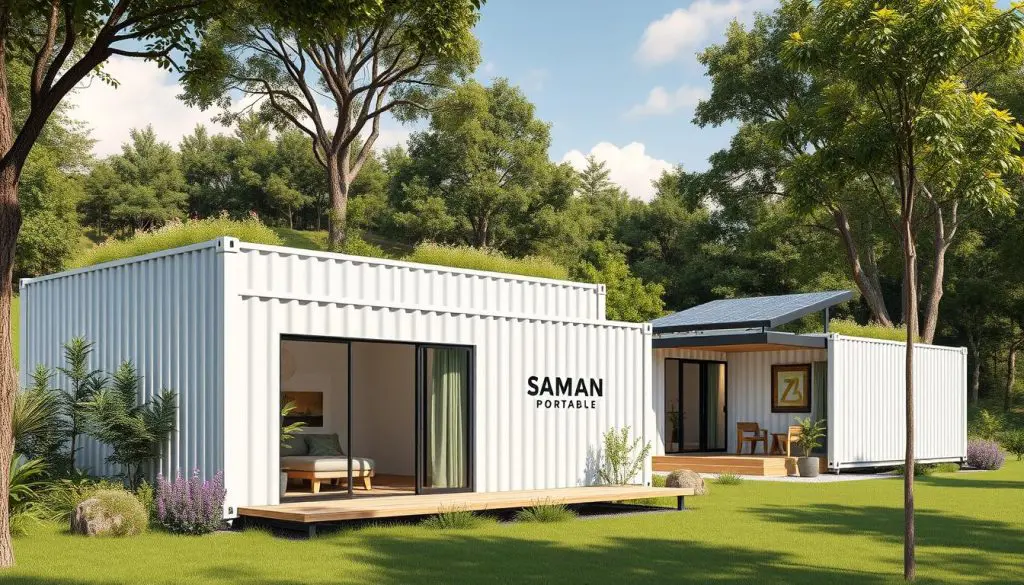
The innovative design features of shipping container architecture set it apart from traditional construction methods, offering unique and creative possibilities. One of the most notable features is the ability to stack containers to create multi-story structures, maximizing vertical space and providing additional square footage. This stacking technique allows for the creation of complex and visually striking designs, such as those seen in container homes and commercial buildings. Additionally, the modular nature of shipping containers enables flexible layouts, allowing architects to customize the interior spaces to suit specific needs and preferences.
Another innovative aspect of shipping container architecture is the incorporation of sustainable design elements, such as rooftop terraces and central courtyards. These features not only enhance the aesthetic appeal of container buildings but also promote eco-friendliness by providing natural light and ventilation. The use of sustainable materials and technologies, such as solar panels and rainwater harvesting systems, further contributes to the environmental benefits of shipping container architecture. As architects continue to explore the potential of shipping containers, innovative design features will play a crucial role in shaping the future of sustainable construction.
Sustainability in Container Architecture
Sustainability is a core principle of shipping container architecture, offering a viable solution to the environmental challenges facing the construction industry. By repurposing empty shipping containers, architects can significantly reduce construction waste and minimize the environmental impact of building projects. This approach not only promotes the responsible use of resources but also supports the broader goals of sustainability and eco-friendliness. The use of shipping containers as building materials aligns with the growing demand for sustainable construction practices, making container architecture an attractive option for environmentally conscious developers.
In addition to reducing waste, shipping container architecture also incorporates sustainable design elements that enhance the overall eco-friendliness of the structures. The use of sustainable materials, such as recycled steel and energy-efficient insulation, contributes to the environmental benefits of container buildings. Additionally, the integration of renewable energy technologies, such as solar panels and wind turbines, can further reduce the carbon footprint of container-based projects. As the world continues to prioritize sustainability, shipping container architecture offers a promising path forward for the construction industry, demonstrating the potential for innovative and eco-friendly building solutions.
Structural Elements and Durability
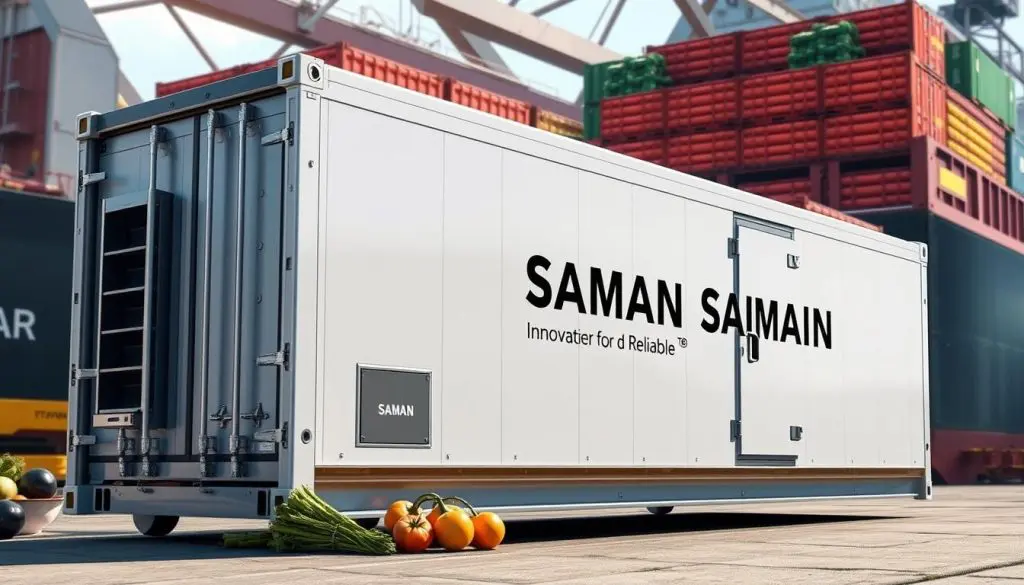
The structural elements of shipping container architecture are a key factor in its durability and resilience. Shipping containers are designed to carry heavy loads and withstand harsh environmental conditions, making them an ideal building material for robust and long-lasting structures. The steel walls and side walls of shipping containers provide excellent structural integrity, allowing them to support significant weight and resist damage from natural disasters. This durability ensures that container buildings can stand the test of time, offering a reliable and sustainable alternative to traditional construction methods.
In addition to their inherent strength, shipping containers can be reinforced through welding and the addition of structural supports to enhance their load-bearing capacity. This reinforcement is particularly important for multi-story structures and buildings located in regions prone to extreme weather conditions. The ability to modify and strengthen shipping containers allows architects to create a wide range of structures that meet specific design and safety requirements. As the demand for durable and resilient construction solutions grows, shipping container architecture continues to gain recognition for its ability to deliver reliable and sustainable buildings.
Versatility in Design
The versatility of shipping container architecture is one of its most appealing features, offering endless possibilities for creative and innovative design. Shipping containers can be used to create a wide variety of structures, from single-family homes to large commercial complexes. The modular nature of containers allows for flexible layouts and configurations, enabling architects to customize the design to meet specific needs and preferences. This versatility extends to the interior spaces as well, where containers can be combined and modified to create unique and functional living and working environments.
In addition to their flexibility in design, shipping containers can also be adapted to suit different architectural styles and aesthetics. The exterior of containers can be painted, clad, or modified to achieve the desired appearance, while the interior spaces can be equipped with modern amenities and finishes. This adaptability makes shipping container architecture a popular choice for projects that require a high degree of customization and creativity. As architects continue to explore the potential of shipping containers, their versatility in design will remain a key factor in the growing popularity of container-based construction.
Notable Container Architecture Projects
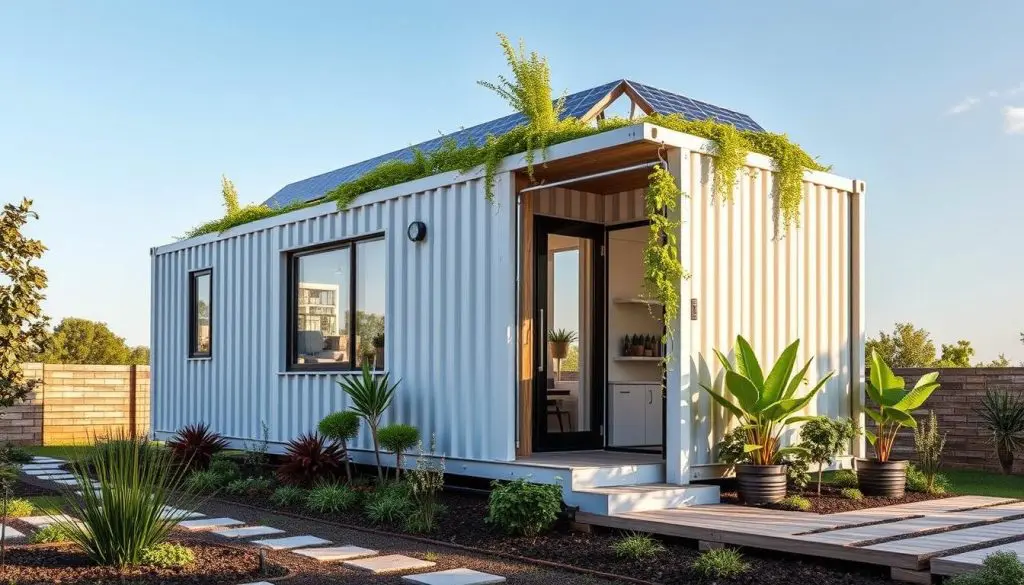
Throughout the world, numerous notable container architecture projects have showcased the potential and versatility of shipping containers in construction. In Los Angeles, modern container homes have become a symbol of sustainable and innovative living, offering eco-friendly and cost-effective housing solutions in the heart of the city. These homes often feature stacked containers, rooftop terraces, and central courtyards, demonstrating the creative possibilities of container architecture. Similarly, in London, shipping containers have been used to create office spaces and student housing, providing flexible and affordable accommodations in a bustling urban environment.
Amsterdam is another city that has embraced shipping container architecture, with sustainable container villages and eco-friendly projects that highlight the environmental benefits of this construction method. These projects often incorporate renewable energy technologies, such as solar panels and rainwater harvesting systems, further enhancing their sustainability. In New York, high-profile commercial projects have utilized shipping containers to create unique and visually striking buildings, demonstrating the adaptability and appeal of container architecture in a variety of contexts. As more cities around the globe recognize the potential of shipping containers, their use in construction continues to expand, offering innovative solutions to modern building challenges.
Modular and Prefabricated Construction
Modular and prefabricated construction techniques have played a significant role in the rise of shipping container architecture, offering efficient and flexible building solutions. Shipping containers are inherently modular, allowing for quick assembly and disassembly, making them ideal for prefabricated construction projects. This approach enables architects to create structures that can be easily transported and installed on-site, reducing construction timelines and minimizing disruption. The use of prefabricated modules also allows for greater control over the quality and consistency of the final product, ensuring that container buildings meet the highest standards of construction.
In addition to their efficiency, modular and prefabricated construction techniques offer a high degree of adaptability, allowing for the creation of structures that can be easily expanded or modified to meet changing needs. This flexibility is particularly valuable for projects that require rapid deployment or temporary installations, such as emergency shelters or pop-up stores. The ability to quickly and efficiently construct buildings using shipping containers has made modular and prefabricated construction a popular choice for a wide range of applications, from residential homes to commercial and industrial spaces. As the demand for innovative and sustainable construction solutions continues to grow, modular and prefabricated construction techniques will remain a key component of shipping container architecture.
Functional Features
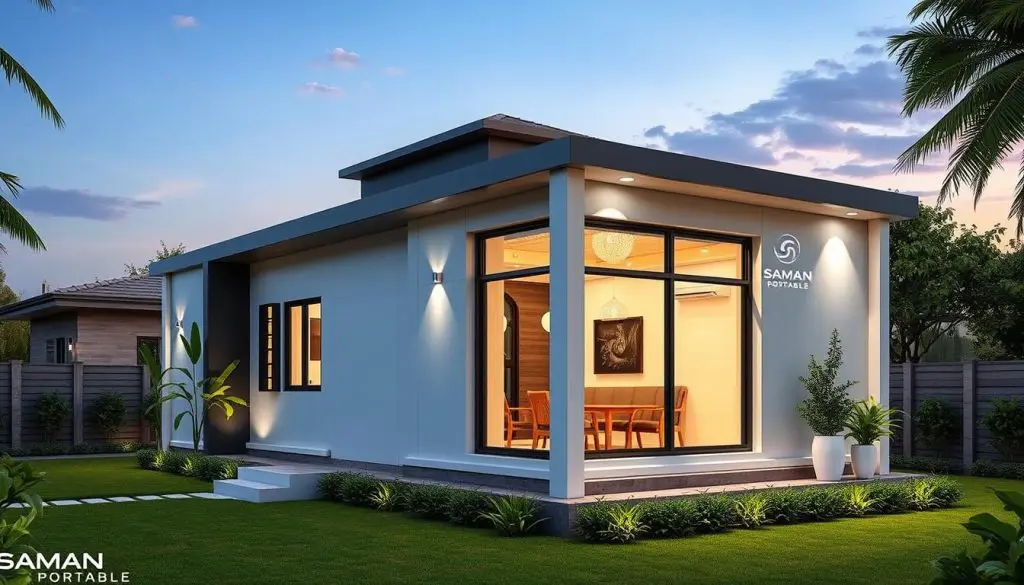
Shipping container architecture offers a range of functional features that enhance the usability and comfort of container-based structures. One of the most important aspects of container architecture is the ability to equip interiors with modern amenities, such as kitchens, bathrooms, and plumbing systems. These features ensure that container homes and offices provide a high level of comfort and convenience for their occupants, making them a viable alternative to traditional buildings. Additionally, the use of insulated walls and energy-efficient windows and doors helps to maintain comfortable indoor temperatures, reducing the need for heating and cooling systems.
In addition to their functional interiors, shipping container buildings can also incorporate a variety of design features that enhance their overall usability and appeal. The modular nature of containers allows for the creation of flexible layouts and configurations, enabling architects to customize the design to meet specific needs and preferences. This adaptability extends to the exterior as well, where containers can be modified to include balconies, rooftop terraces, and other outdoor spaces. As architects continue to explore the potential of shipping container architecture, the functional features of container buildings will remain a key factor in their growing popularity and widespread adoption.
Cost and Feasibility
The cost and feasibility of shipping container architecture have made it an attractive option for a wide range of construction projects. One of the primary advantages of using shipping containers as building materials is their low cost compared to traditional construction methods. The bulk availability of containers reduces material costs, making them an affordable option for individuals, companies, and governments alike. Additionally, the modular nature of shipping containers allows for efficient construction, reducing labor costs and minimizing construction timelines.
In terms of feasibility, shipping container architecture offers a high degree of adaptability and flexibility, making it suitable for a variety of applications. The ability to quickly and easily modify containers to meet specific design and functional requirements ensures that container buildings can be tailored to suit a wide range of needs. This adaptability extends to the construction process as well, where shipping containers can be prefabricated and delivered to the site for rapid assembly. As the demand for cost-effective and sustainable construction solutions continues to grow, the cost and feasibility of shipping container architecture will remain key factors in its widespread adoption.
Challenges in Retrofitting
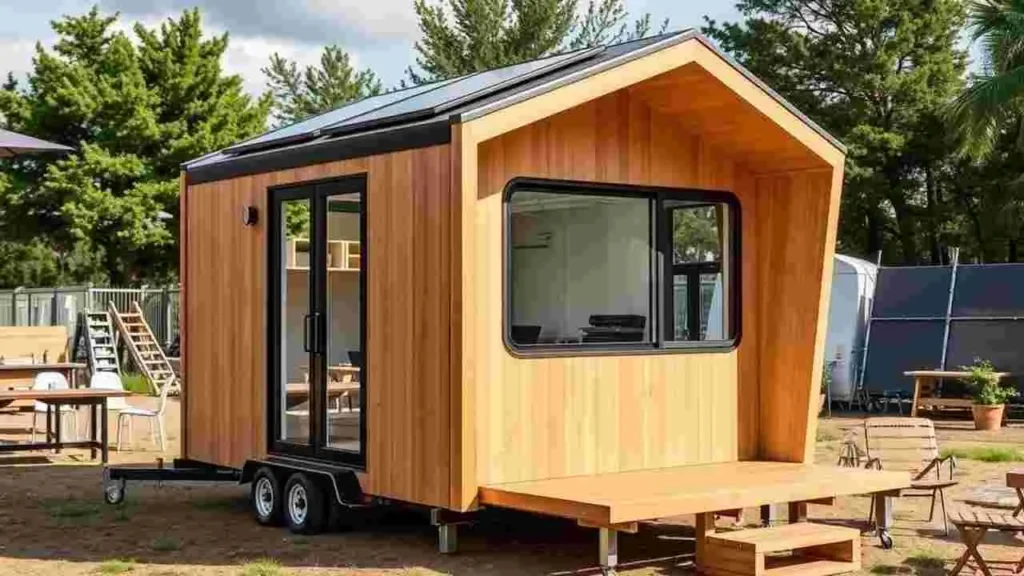
Retrofitting shipping containers for use in architecture presents several challenges that must be addressed to ensure the success of container-based projects. One of the primary challenges is cutting and reinforcing steel walls to accommodate windows, doors, and other structural elements. This process can be labor-intensive and require specialized skills, adding to the overall cost and complexity of construction. Additionally, the need to insulate containers to manage temperature and noise levels can further increase costs and complicate the retrofitting process.
Another challenge associated with retrofitting shipping containers is addressing issues related to rust and corrosion. Shipping containers are designed for durability, but exposure to moisture and saltwater can lead to corrosion over time. Ensuring the longevity of container structures requires regular maintenance and the use of protective coatings, which can add to the overall expense of construction. Despite these challenges, the potential benefits of shipping container architecture make it a worthwhile investment for those seeking innovative and sustainable building solutions. By carefully planning and executing retrofitting projects, architects and developers can overcome these challenges and create successful container-based structures.
Conclusion
Shipping container architecture offers a sustainable, cost-effective, and innovative alternative to traditional construction. With their durability, modular design, and versatility, shipping containers have become a cornerstone of modern eco-friendly construction practices. From residential housing to commercial and industrial applications, the adaptability of these steel structures continues to inspire architects and developers worldwide. Despite challenges like retrofitting and insulation, the benefits far outweigh the drawbacks, making container architecture a forward-thinking solution to the challenges of modern construction.
As the demand for affordable and sustainable construction grows, shipping container architecture is poised to play a significant role in shaping the future of the industry. Whether you’re envisioning a container home, office, or any other modular structure, the potential of these innovative designs is limitless.
To explore customized modular solutions or to make an inquiry about shipping container projects, visit Saman Portable.
 Container Cafe
Container Cafe
















































































